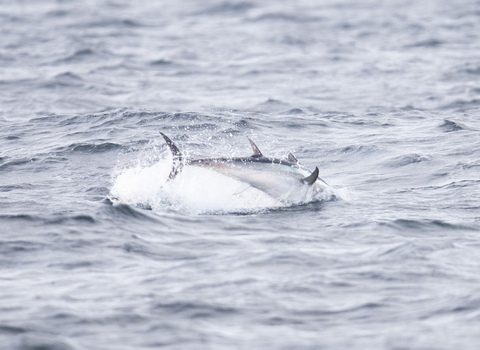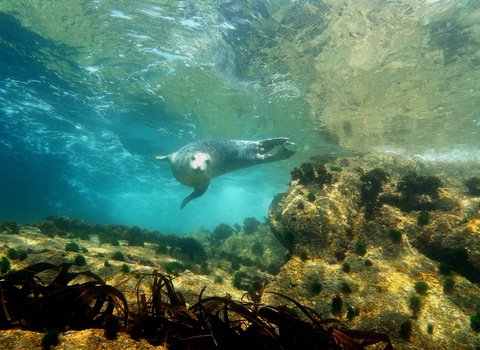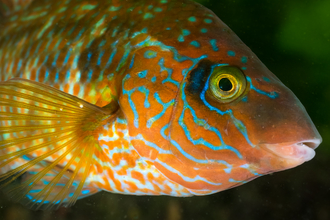
Bluefin tuna © Joe Pender
Atlantic Bluefin Tuna
The bluefin tuna is a highly migratory fish which roams the oceans. This species will cross oceans, travelling between the Mediterranean Sea and the Gulf of Mexico. They are speedy swimmers, reaching a top speed of 43 mph.
Scientific name
Thunnus thynnusWhen to see
July - DecemberSpecies information
Statistics
Length: Common length 200cmWeight: up to 250kg
Lifespan: 32 years old
Conservation status
Listed as Least Concern by the IUCN red list.
Habitats
About
Bluefin tuna used to be a regular sight in UK waters but due to overfishing across the Atlantic, the populations declined and became non-existent. For more than 60 years no sightings of this species were recorded anywhere around the UK but in the past decade, sightings are slowly increasing. The return is likely due to improved management of the fisheries through the introduction and enforcement of catch limits (quotas). Increasing sea temperatures due to climate change may also be shifting the distributions of their prey, leading to a change in tuna distribution.How to identify
The bluefin tuna can be identified by its distinctive metallic blue colouration on its top side with a white underside. Its body shape is torpedo-like, making it extremely streamlined in the water. It has two dorsal fins (back fins) one of which is significantly larger than the other.Distribution
Historically, bluefin tuna could be seen around most of the UK, reaching as far north as Scarborough in Yorkshire. Recently bluefin tuna have only been spotted off the South West coast of England but this might expand as the tuna continue to return in larger numbers.Did you know?
The bluefin tuna has a specialised blood vessel structure which allows it to keep its body temperature higher than the water temperature. Keeping body temperatures high helps it swim quickly, even in colder waters. Most fish blood temperatures will be the same as the surrounding water.How people can help
If you eat fish, then always choose sustainably caught fish. The Wildlife Trusts are working with fishermen, researchers, politicians and local people towards a vision of 'Living Seas', where marine wildlife thrives. Do your bit for our Living Seas by supporting your local Wildlife Trust or checking out our Action Pages.Watch
Tuna (https://vimeo.com/889433636)
Joan Edwards




